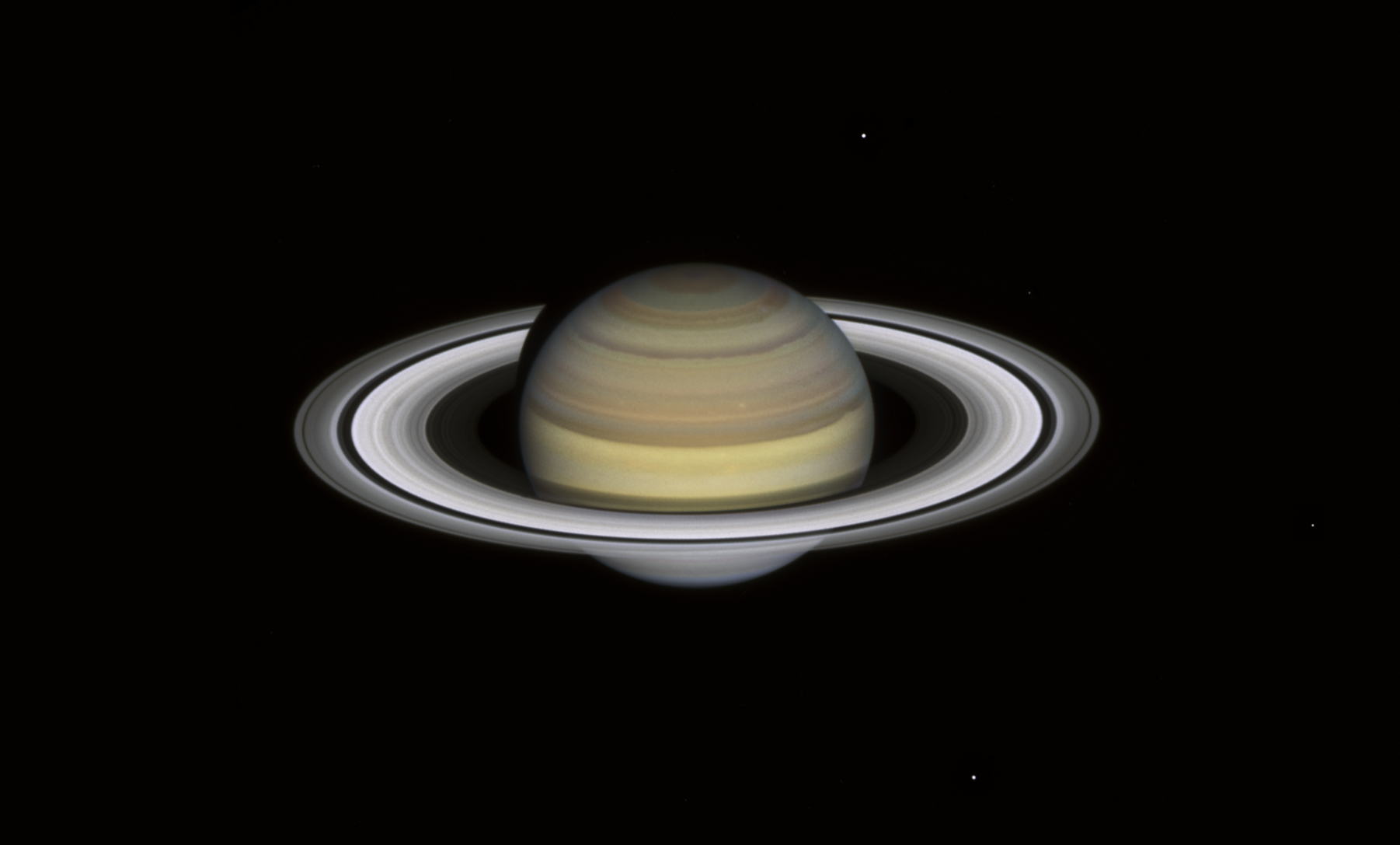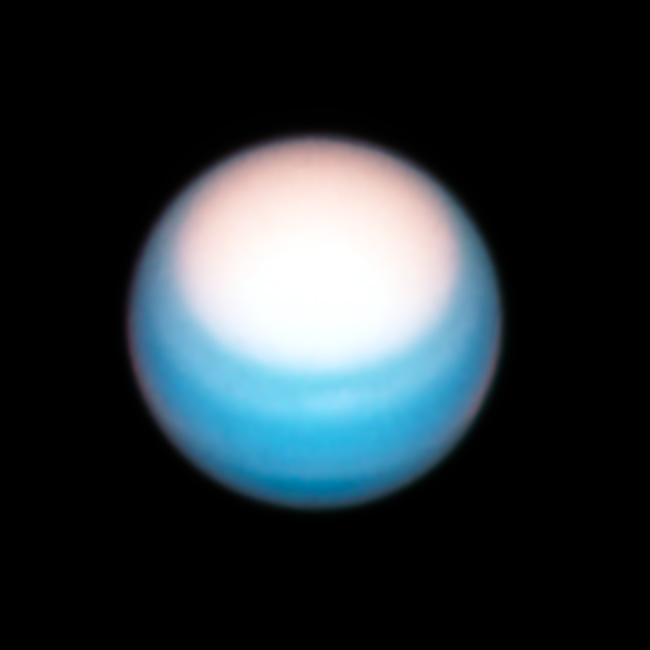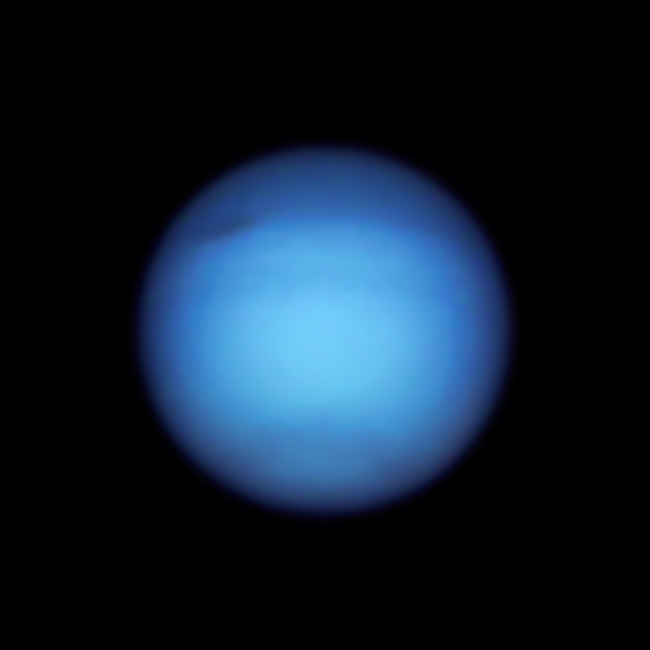Hubble telescope's annual 'grand tour' tracks changes in outer solar system
Each year, NASA's most venerable space telescope photographs the outer planets of the solar system.
And so this autumn, as usual, the Hubble Space Telescope turned to each planet in turn. The tradition allows astronomers to monitor how the atmospheres of these worlds — Jupiter, Saturn, Uranus and Neptune — change over time. But the photos are, of course, also stunning. NASA released images from this year's "grand tour" on Nov. 18.
The images highlight the vast differences between the four outer worlds and their inner, rocky counterparts: Mercury, Venus, Earth and Mars. The outer gas giants are much larger and reside much farther from the sun, up to 30 times farther than Earth does, meaning these worlds are also extremely cold, according to a statement from NASA.
Related: 25 weird and wild solar system facts
"Unlike the rocky terrestrial planets like Earth and Mars that huddle close to the sun's warmth, these far-flung worlds are mostly composed of chilly gaseous soups of hydrogen, helium, ammonia, methane and deep water around a packed, intensely hot, compact core," according to the statement.
From Hubble's orbit, above that even of the International Space Station and as far as 3 billion miles from the outer worlds, the space telescope has documented striking changes in the planets' atmospheres year over year, including dynamic weather patterns and seasonal variations. Each year, scientists working on the Outer Planets Atmospheres Legacy program (OPAL) turn Hubble's images into yearly maps of each planet that allow researchers to study the dynamic forces driving the planets' unusual weather patterns.
This year's view of Jupiter's ever-changing atmosphere shows several new storms and color differences near the planet's equator. Taken on Sept. 4, the image captured a darker, more reddish equator than expected and several bright red, elongated storms called "barges." The image also shows a smaller spot referred to as "Red Spot Jr.," beneath Jupiter's famous Great Red Spot.
Breaking space news, the latest updates on rocket launches, skywatching events and more!
"Every time we get new data down, the image quality and detail in the cloud features always blow me away," Amy Simon, a planetary scientist at NASA's Goddard Space Flight Center in Maryland, said in the statement. "It strikes me when I look at Jupiter, in the barges or in the red band right below, you can see cloud structures that are clearly much deeper. We're seeing a lot of structure here and vertical depth variation."
Hubble's latest view of Saturn, taken on Sept. 12, captures the planet's northern hemisphere entering early autumn. The seasonal change triggers rapid and extreme color changes of the yellow and gold bands in the atmosphere, which are caused by superfast winds.
Conversely, the planet's south pole, which is coming off the winter season, exudes a blue-ish hue. The Hubble image also captured Saturn's iconic hexagonal storm, which was not as visible last year, according to the statement. The storm circles the planet's north pole and was first spotted by the Voyager mission 30 years ago.
Similarly, Uranus and Neptune show changes, too. An Oct. 25 image of Uranus highlights the planet's bright northern polar hood. It's springtime in the northern hemisphere on Uranus, meaning the north pole of the planet is pointed toward the sun — and because of the dramatic tilt of the planet's axis, nearly 90 degrees, that's a stark change.
The spring's increase in ultraviolet radiation absorbed from the sun alters the concentration of methane gas and haze particles in the planet's atmosphere, which, in turn, causes the polar region to brighten, according to the statement.
Meanwhile, Neptune's northern hemisphere is darker than usual and shows a giant storm, represented by the dark spot in an image captured by Hubble on Sept. 7. This dark storm — which scientists estimate is wider than the Atlantic Ocean — has moved around the planet since it was first spotted by Hubble in 2018. In the new image, the storm has reversed direction and is moving back north.
The Hubble image also shows a dark circle encompassing the planet's south pole and some bright clouds caused by the absorption of red light by the planet's methane-rich atmosphere, according to the statement.
At all four giant planets, the ability to track atmospheric changes over decades in such detail is only possible with a space telescope like Hubble.
"This is something we can best do with Hubble. With Hubble's high resolution, we can narrow things down to which band is actually changing," Michael Wong, a planetary scientist from the University of California, Berkeley, said in the statement.
"If you were to look at this through a ground-based telescope, there's some blurring with our atmosphere, and you'll lose some of those color variations,” Wong said. "Nothing from the ground will get visible-light images as sharp as Hubble's."
Follow Samantha Mathewson @Sam_Ashley13. Follow us on Twitter @Spacedotcom and on Facebook.

Samantha Mathewson joined Space.com as an intern in the summer of 2016. She received a B.A. in Journalism and Environmental Science at the University of New Haven, in Connecticut. Previously, her work has been published in Nature World News. When not writing or reading about science, Samantha enjoys traveling to new places and taking photos! You can follow her on Twitter @Sam_Ashley13.





